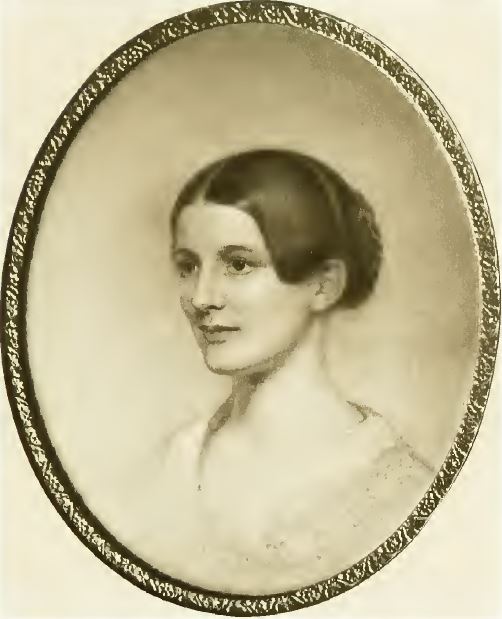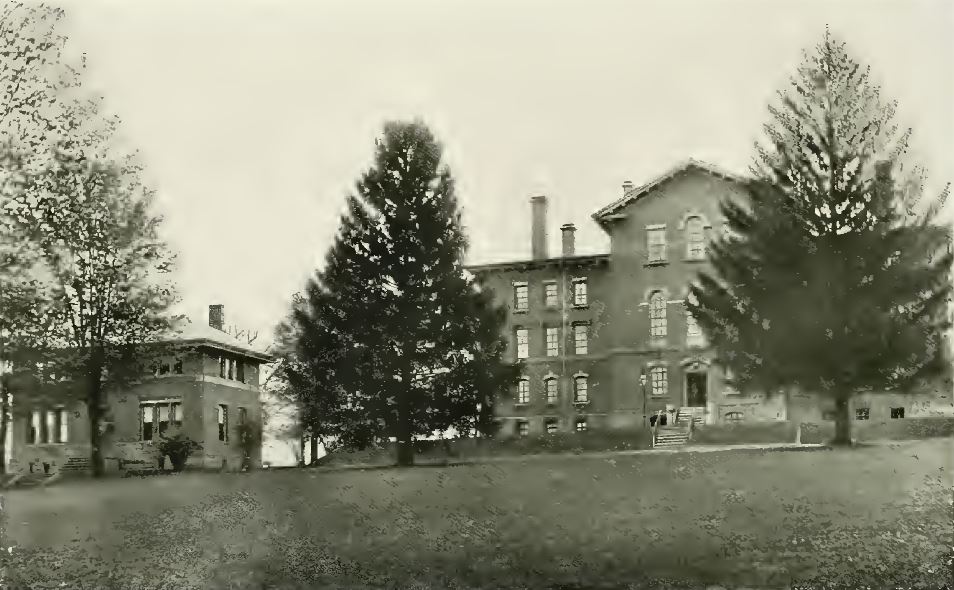by Susan Martin, Senior Processing Archivist
I told you a few weeks ago about Sarah Freeman Clarke, whose papers form part of the newly processed Perry-Clarke additions. I’d like to continue now with my series of deep dives into this collection by introducing you to Anna Huidekoper Clarke.

Anna was born on 5 November 1814 in Meadville, Pennsylvania. Her father, Harm Jan Huidekoper, was a Dutch immigrant and wealthy landowner, in fact one of the largest landowners in the United States. Harm and his wife, Rebecca Colhoon Huidekoper, had seven children. Sadly, the first two died young, but the rest lived to adulthood: Alfred, Edgar, Anna, Frederic, and Elizabeth.
It would be difficult to talk about the Huidekopers without talking about Meadville, a town with which the family is inextricably linked. Meadville is located in western Pennsylvania, only about 20 miles from the Ohio border. Harm first visited Meadville in 1802, just 14 years after white settlers had established the town. In his autobiography, he described it as “a small village, containing 25 or 30 houses, chiefly log ones, and a population of about 150 inhabitants.”
Despite this uninspiring description, Harm decided to settle in Meadville and built a large house, Pomona Hall, at 1119 Water Street. (This site is now the location of Holland Towers Apartments.) The Huidekoper home became, by all accounts, a center of the social and cultural life of Meadville and, according to some sources, even a stop on the Underground Railroad. It was here that Anna was born and raised.
Importantly, during the 1800s, the town of Meadville also became “an important outpost of Unitarianism” (Harm Jan Huidekoper, p. 317). Harm, a convert to Unitarianism, and his son Frederic, a Unitarian minister, founded a seminary called Meadville Theological School in 1844.

Most of the Huidekopers were intimately involved with the operations of the school for many years: Harm was co-founder, financier, and first board president; Alfred was first secretary and trustee; Edgar was treasurer and superintendent of Divinity Hall; and Frederic was co-founder, professor, librarian, and treasurer. Not to be outdone, Elizabeth Gertrude Huidekoper, the youngest of the siblings, picked up the mantle: she was the first woman to serve as a trustee, presided as board president for 17 years, donated real estate and library books to the school, and even provided financial assistance to individual students. She was known by some as “the mother of Meadville.”
After 180 years, the seminary is still in existence, as part of the Meadville Lombard Theological School in Chicago.
Anna was the only one of her siblings to leave Meadville. On 15 August 1839, she married Unitarian minister James Freeman Clarke, and the couple eventually settled in Boston. They had four children: Herman Huidekoper Clarke, Lilian Freeman Clarke, Eliot Channing Clarke, and Cora Huidekoper Clarke. Anna was very active in her community, serving as treasurer of the Church of the Disciples branch of the American Unitarian Association Women’s Auxiliary Conference, vice president of the South End Industrial School, and member of the board of directors of the New England Hospital.
Anna and James’s marriage was evidently a happy one; their voluminous and loving correspondence in the Perry-Clarke additions testifies to that. The collection also contains letters to Anna from a number of close friends, including many from her teenage years discussing fashion and local gossip, as well as correspondence of most of the Huidekopers I’ve mentioned.
Anna’s life, of course, had its tragedies. She lost her son Herman to scarlet fever when he was just eight or nine years old. Her papers in the collection include a few pages of anecdotes about Herman, of the “kids say the darnedest things” variety. Anna also recorded the reactions of her other children to their brother’s death. For example, Lilian said, “Mother, I wish I would waken up some morning & find it all a dream.” And Eliot asked, “Is there no way to make Herman come back again?”
Anna died in Boston on 2 April 1897.

